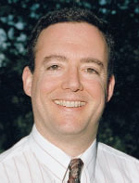What to Eat!
By Alan Goldhamer, D.C. and Jennifer Marano, D.C.
Reprinted from Health Science magazine, Fall 2012

When readers of Health Science are asked, “What should I eat,” the first thing that probably springs to mind is to recommend a vegan, meaning plant-based, diet. But just recommending a vegan diet is not enough. The average American diet is not health-promoting, as we can tell by looking at the average American: most likely overweight or obese, and frequently suffering from such degenerative diseases as diabetes, high blood pressure, cardiovascular disease, cancer, and arthritis.
So, to tell the average American to stop eating animal products is not a sufficient amount of information. If the average person just removes the animal products from his/her diet and ate more of the non-animal products they were currently eating, they might be in far more danger than before. There are many very bad vegan choices out there, and it is entirely possible to consume a totally vegan and terribly unhealthful diet.
Dietary choices will have a profound effect on the quantity and the quality of each person’s life. You and everyone around you are faced with thousands of decisions a year regarding what fuel you will feed your body, so it is imperative that everyone have a basic nutritional information framework to help guide them in making these choices.
In order to make wise choices we must think about the caloric density of foods. Our brains are wired to crave the most concentrated sources of food available. This ability to distinguish between calorically dense foods, such as bread and avocados, and foods less dense in calories, such as salad and vegetables, was a useful talent in times of scarcity. This talent seems so obvious to us today that we tend to ignore it. We don’t think about why we prefer bread or pasta to salad. We don’t think much about why gelato tastes “better” to us than non-fat ice cream. In the distant past we never had to think about what to eat — we just ate whatever we could get our hands on. Consequently we are not well prepared to live in an environment of abundance, not only of natural foods, but an environment of artificial food-like substances designed to seduce our brains and extract money from our wallets while making us sick. At TrueNorth Health Center we call this modern dilemma the “pleasure trap.”
Two main keys to making wise dietary choices are knowing the difference between caloric density and nutritional density, and understanding the role of food processing. That probably sounds a bit complicated, but it isn’t, as we shall see.
First, density: Fats and oils contain more calories per gram than any other nutrient, so any food that contains a lot of fat or oil is a high-calorie food. All natural foods contain some fat. Most vegetables and fruits have small amounts, while nuts, avocados, and olives, and, of course, meat and fish contain a lot more. Natural foods also contain carbohydrates and protein, and again, amounts vary. Grains and root vegetables are more concentrated and contain less water, and thus have more calories, while fruits and green vegetables are less calorie-dense. But natural foods, particularly fruits and vegetables, are very high in nutrients other than calories. These include vitamins, minerals, antioxidants and other compounds that are essential for our health. This is what is meant by nutritional density.
The second key is understanding food processing. Processing is anything you do to the food to alter its natural state. You can cut it into smaller pieces to make it easier to eat. You can cook it, which softens it and makes the nutrients more available. You can grind it up to avoid having to chew, as in blended salads. These are fairly minimal forms of processing, and thus do not change the nature of the food too much.
But humans have learned to do a lot more than simple processing. We can squeeze the juice from fruit and get rid of all the fiber, leaving a very sweet, concentrated liquid. We can remove the fibrous coating from grain and grind it up very finely to make flour and then turn that into bread, a highly concentrated food. We can extract the fat or oil from foods and bottle it to be sold separately or add it to other foods. We can extract the sugar from cane or beets or corn and then use the concentrated sugar to concoct foods that do not exist in nature. Essentially, we’ve learned to isolate the various components of foods that we find most desirable (mainly sugar, starch and fat) and combine them to form cookies, cakes, ding-dongs — you name it! And it is these artificially concentrated, food-like substances that lead us straight into the pleasure trap.
We have to think about the food we put in our mouths if we want to promote optimal health. There just isn’t any getting around it. We don’t live in an environment where we can rely on “instinct.” We need foods with high nutritional density and we need to be aware of, and probably limit, how much high calorically dense food we eat. We need to avoid foods that have been processed to the extent that the fiber has been removed and the sugar and fat content has been concentrated or artificially enhanced.
We know that smoking is addictive, that heroin and cocaine are addictive, and that alcohol can be addictive. But we don’t often think about how artificially concentrated foods packed with added sugar, oil and salt can act just like drugs by over-stimulating the reward centers in our brains. But large food processing companies understand how this works, and they put a lot of effort into designing products that activate this addiction-like reaction and keep us coming back for more.
As a result of this dietary pleasure trap, many people are suffering from the diseases of excess that were previously mentioned. Fortunately, adopting a health promoting diet is a cost effective and reliable way to achieve optimum weight and avoid, and even reverse, the diseases associated with dietary excess.
The most effective way to get the proper nutrients without overdoing the calories is to include large quantities of high nutritionally dense and low calorically dense vegetables in your diet. This includes salad greens (lettuces, spinach, mesclun, sprouts), root vegetables (carrots, beets, jicama, sweet potatoes, white potatoes), dark greens (kale, chard, collards, purslane), cabbage family (broccoli, cauliflower, bok choy), and green beans and squashes. Most of these can be eaten raw, juiced, blended, steamed or baked. If you are trying to lose weight, these vegetables should be eaten first, before any more concentrated foods are eaten.
In addition to vegetables you will want to include fresh fruit and whole non-glutinous grains like brown rice, quinoa, millet or corn. Also, beans, including lentils and peas, may be included. Limited quantities of high-fat vegetable foods such as nuts and avocado may be included, depending on your goals regarding weight.
A vegan diet lacks a significant source of vitamin B12. We recommend that all vegans consume 1000 mcg per day of vitamin B12 in the form of methylcobalamin in order to insure that adequate vitamin B12, an essential nutrient, is present.
An excellent resource for preparing this type of diet is a cookbook called Bravo! written by our own chef here at TrueNorth Health Center.
Alan Goldhamer, D.C., is the founder of TrueNorth Health Center in California. He is a member of the NHA Board of Directors. Dr. Goldhamer is the author of the Health Promoting Cookbook and co-author of The Pleasure Trap. Jennifer Marano, D.C., is the co-founder of TrueNorth Health Center. Both are Life members of the National Health Association.



